
Transcription
Whispers Reflection Goehler
- Pick one model - Medical, public health, human service, and explain how to implement change to improve services here.
A - OK! How to implement change to improve services here at MCSP, and CDCR as a whole, whose product currently has an 85% failure rate of recidivism statistics.
The human service system is defined by the combination of several parts of the social welfare system, including resources, policies, programs, and knowledge. These resources, policies, programs, in the fields of social care and social control, are funded by taxpayers. In any other economic scheme it appears the tax-payer would be considered investors - or rather "shareholders", in this prison industry complex where there appears to be an epidemic of mental health problems according to the exponential surge of prisoner-patients and the corresponding need of increased funding for additional psych-industry positions.
Of course, it could be the other way around too. Perhaps the incentive of increased funding for additional psych-industry positions requires the apparentcy of an epidemic surge of mental health problems, a conspiracy within the department of corrections and "rehabilitation" by a sort-of Fifth Column of "Helpers" whose help will ultimately recruit and exacerbate the dysfunctional clientele necessary for job security within the human service system.
If tax-payer share-holders were made aware that the CDCR rehabilitates ([fr.L.habilitas=ability] 1: to make fit or capable [as for functioning in society] 2: clothe.dress) through the "services" of booming psych industry whose very existence depends upon validating disabilities with all their incentives encouraging prisoners to manipulate the system for extra privileges, sympathetic advocates, and guaranteed SSI stipend upon release, tax-payers would be incensed to learn that this is going on! Especially if they discover the burgeoning psych industry stratagem to develop a mental health epidemic inside prisons requires non-existent office space, which was made available for them by dismantling the Vocational Training shops and converting them into psych offices. But of course, who am I to suggest a conspiracy?
The mere fact the Chief Psychiatrist salary is more than double than that of our state governor is significant. Add to that the confidentiality clause regarding "medical" records - which somehow includes the mental health products of Ph.D's (Doctors of Philosophy), and lets not forget the history of abuse in the psych industry!
Nothing less than implementing candid accountability has a chance at reversing this fifth column conspiracy to transform a nation of drug addict felons into a nation of mental health patients requiring some form of "help" through the titanic Department of Health and Human Services! It wouldn't take much more than revealing the budget expenses tax-payers fund - listing the exponential budget growth over the previous two decades, revealing Psychiatrist/Psychologist positions/salaries, and corresponding psychotropic prescriptions for the pharmaceutical industry to get behind.
If the definition of homo sapiens is [fr. Homo, genus name+sapiens - fr.L. wise, intelligent]: HUMANKIND, then it would appear a crime against humanity to debilitate prisoners of war, in the perpetual war against poverty, drugs and crime! It's going to require another Nuremberg-type tribunal of public opinion to hold the merchants of dysfunction to account for failing to develop ability to function within the Department of REHABILITATION!
I would implement change to improve services here, by first publishing annual CDCR budget allocations and salaries of every position and department, and corresponding statistics of successful rehabilitation services to individual prisoner-clients. Shareholders in this industry of rehabilitation should be made aware of the products their tax-dollars generate... which is currently little more than job security.
Mr. Goehler -
This is an interesting way to view what is happening. I wonder if you think that all helpers are in this mind frame? Good job!
Whispers Chapter 3 Reading Assignment pages 64-80 Reading Guide HSER 300 Goelher
1. How are human services delivered? A variety of community based settings in rural areas, the military, corrections, schools, sites of natural disasters, religious organizations, etc.
2. What part do schools play in Human Service delivery? A partnership between HS and education addresses the complex needs of children and families.
3. What are wraparound services? What is meant by least restrictive environments? Least restrictive is outside the "office" setting. the "services" are proactive, emphasize treatment via purposeful activities.
4. How has the population receiving Human Services changed from early human services to the current? Immigration, migrating "back to" rural areas. Traditionally HS was for people in financial need, not it is focusing on mental health.
5. What is SAMHSA and why is it important? Substance Abuse and Mental Health Services Administration. Yet another bureaucracy, it provides tax paying jobs - to disseminate information, refer services, research, etc.
6. What are some of the barriers for clients and providers in rural areas? How does this relate to the community you live in today? Geographical distance between clients and providers cost of service/confidentiality/coordination of care
7. What part does technology play in Human Services? How is it effective? Communication info management Administrators of Services, direct service providers, and clients are all "customers" of the computer systems.
8. What type of communication is being used in Human Services? What are the benefits and draw backs of these methods? Teleconferencing, etc. help plan/coordinate programs, monitor costs, keep records=mapping progress. Counseling/E-therapy, blogs, etc. provide impersonal "comm"
9. How is data information impacting Human Services? Provides services more effectively and efficiently
10. How is technology impacting Human Services clients directly? What is your opinion about this? Why? Standardization. Certainly de-aberrate face-to-face mis-perception... but the standardized solution to particularized problems aren't always custom fit for every client.
11. How do some of the current Human Services practices map across to other countries and international boundaries? WWW draws the world closer for consideration, insight, education programs
12. How is urbanizing impacting Human Services? More and more migrate to cities who need help
13. What are some of the challenges on Human Services internationally? Refugees, migrants, disease, drugs, natural disasters
14. What influences do internationally Human Services have on Human Services in the United States? Immigration, diversity, multicultural, religeon
15. What are the top trends in Human Services, i.e. types of needs and programs? Aging, loss of income, housing, depression, diversity, sexual orientation
16. How has aging impacted Human Services in the United States? Baby boomers are overwhelming human service needs
17. How has death been incorporated in Human Services? Depression=mental health services
18. What are the different aspects of diversity that a Human Services provider will be exposed to? What should the provider consider? Religious, sexual orientation, multiculturism
19. What about religious differences? How do they play a role in Human Services? Cultural consideration
20. How does sexual orientation impact Human Services? Advocacy role considerations
21. How has the workplace changed and what impact has it had on Human Services? Currently the technology culture and growing population of work force produce a greater need of Human Service assistance.
22. What is happening for clients and providers of Human Services in the 21st century? Partnership
23. How have the roles of human service professionals changed with the 21st century? Cooperation advocacy
24. How does advocacy play a part in Human Services and why? Speaking out on behalf of clients introduces a "team" paradigm enhancing the clients rehabilitation
25. What does the text mean when it refers to the whole person? Social, mental, financial, vocational, family, cultural, religious, education
26. How do partnerships work in Human Services? Why are they important? Partnership adds the professional enhancement to the relationship between client responsibility and helper resourcefulness
Human Services Today
Whispers CH. 3 Goehler
Self Assessment
- Explain why human service delivery has expanded beyond the traditional settings.
A - Increasing cultural diversity, global recession, advances in technology, a trend toward providing services a community based settings and less in institutional ones is helping to serve clients in the least restrictive environment.
- How was technology changed the delivery of human services?
A - It began to change the way professionals meet their responsibilities, particularly in the areas of communication, information management service provision and professional development. As tech advances draw the world closer, we become more aware of the human services challenges to provide services to clients, including diagnosing and accessing, teaching new skills, and assisting those with disabilities or impairments.
- Why is it important to understand the international dimension of human services?
A - Many individuals live in large cities in poor countries where they struggle to meet basic needs and have little access to housing and nutritious food, hence an increase in global population, international migration and urbanization present human service challenges
- How will the trends occurring in the next few decades effect HS delivery?
A - Aging in America, diversity of clients and professional, the changing workplace, new roles and skills of/for clients and helpers partnerships, will effect the funding influences and resources to help the increasing number of those in need.
- Describe how religious diversity challenges and brings opportunities to a community.
A - Religious differences is a main factor a social conflict as well as dialogue that enable the exploration of new and old questions
GREAT JOB!
WELL DONE!

Other posts by this author
|
2023 may 31

|
2023 apr 5

|
2023 mar 19
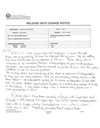
|
2023 mar 5

|
2023 mar 5

|
2023 mar 5

|
More... |

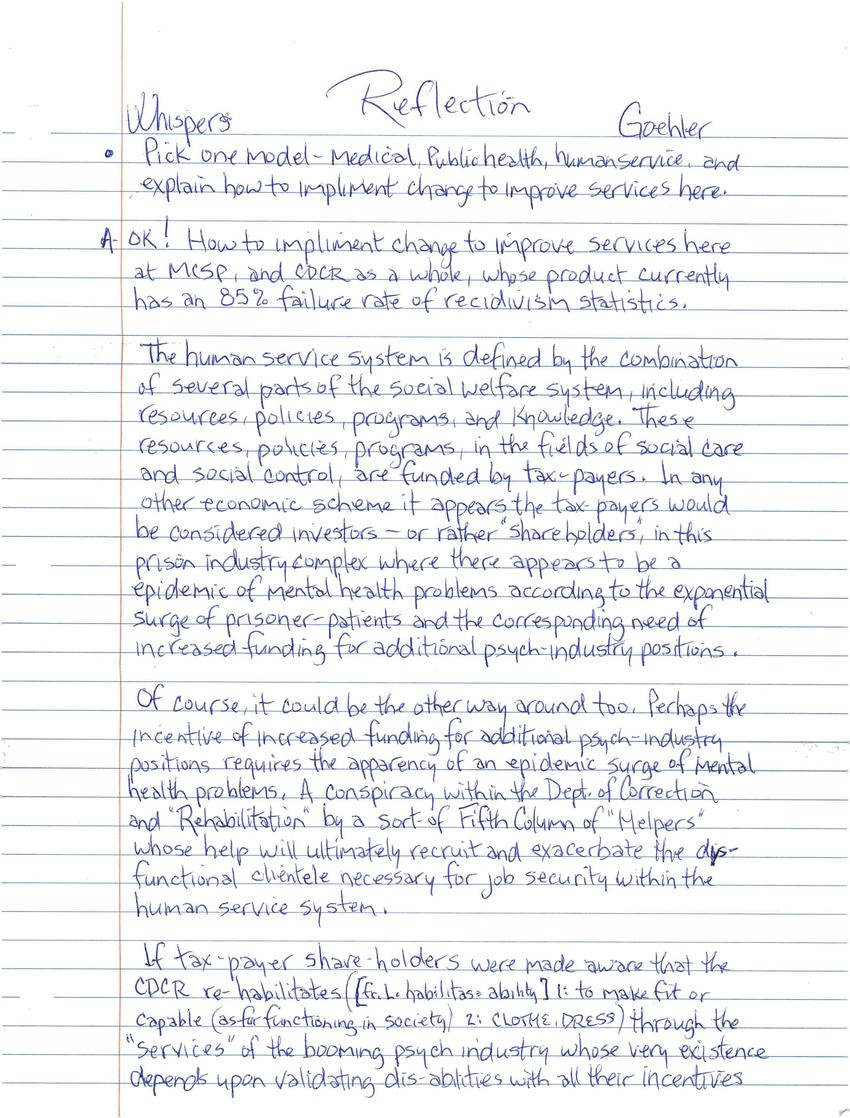
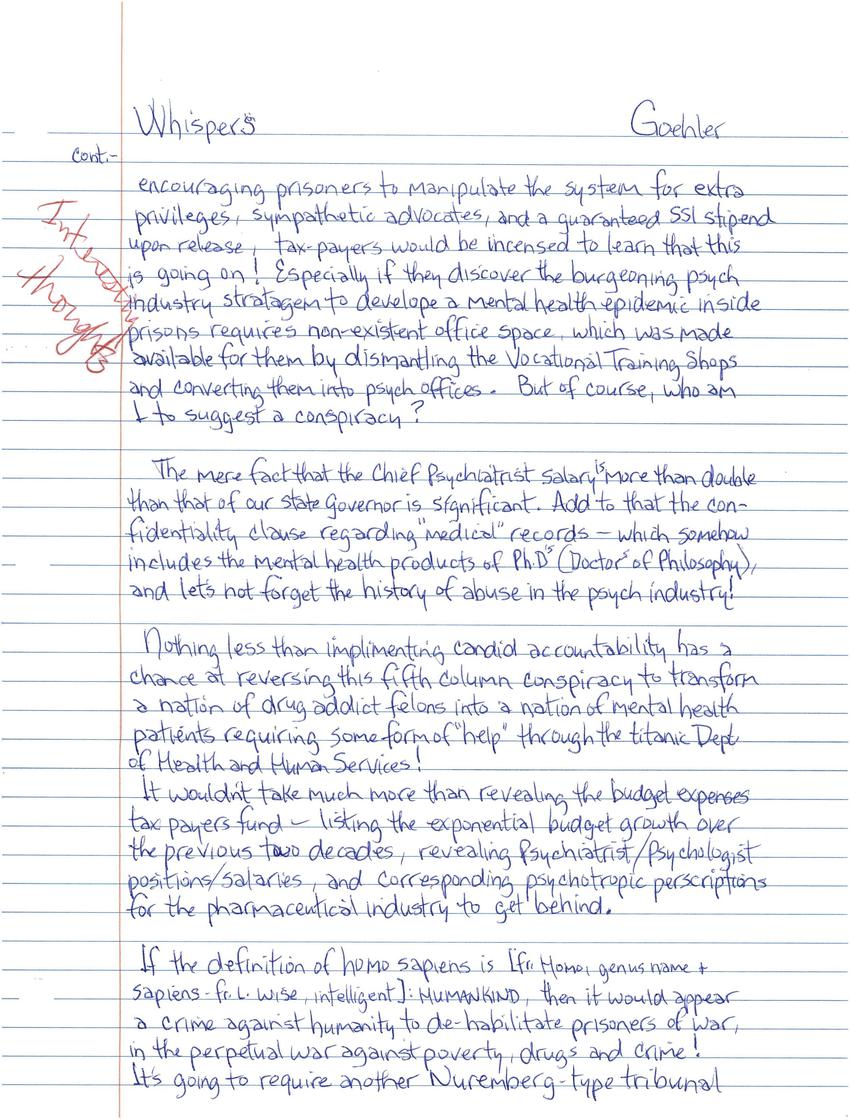
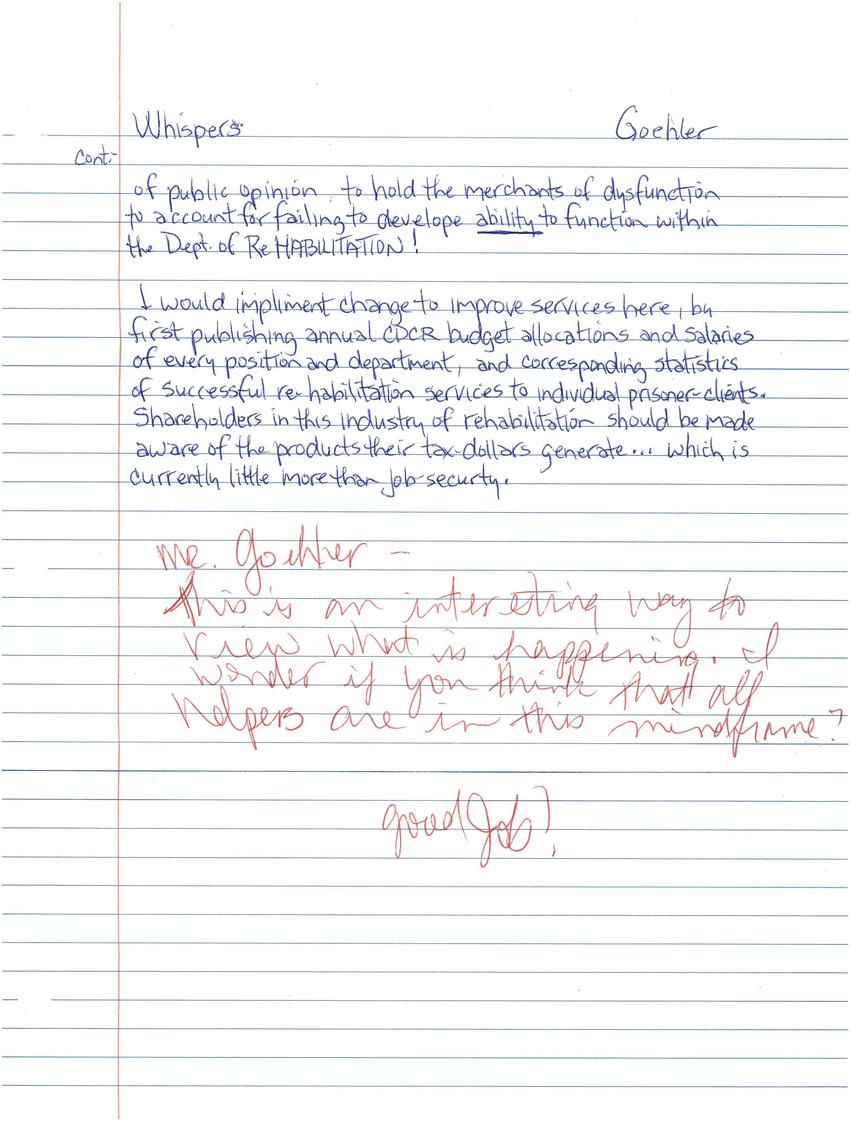
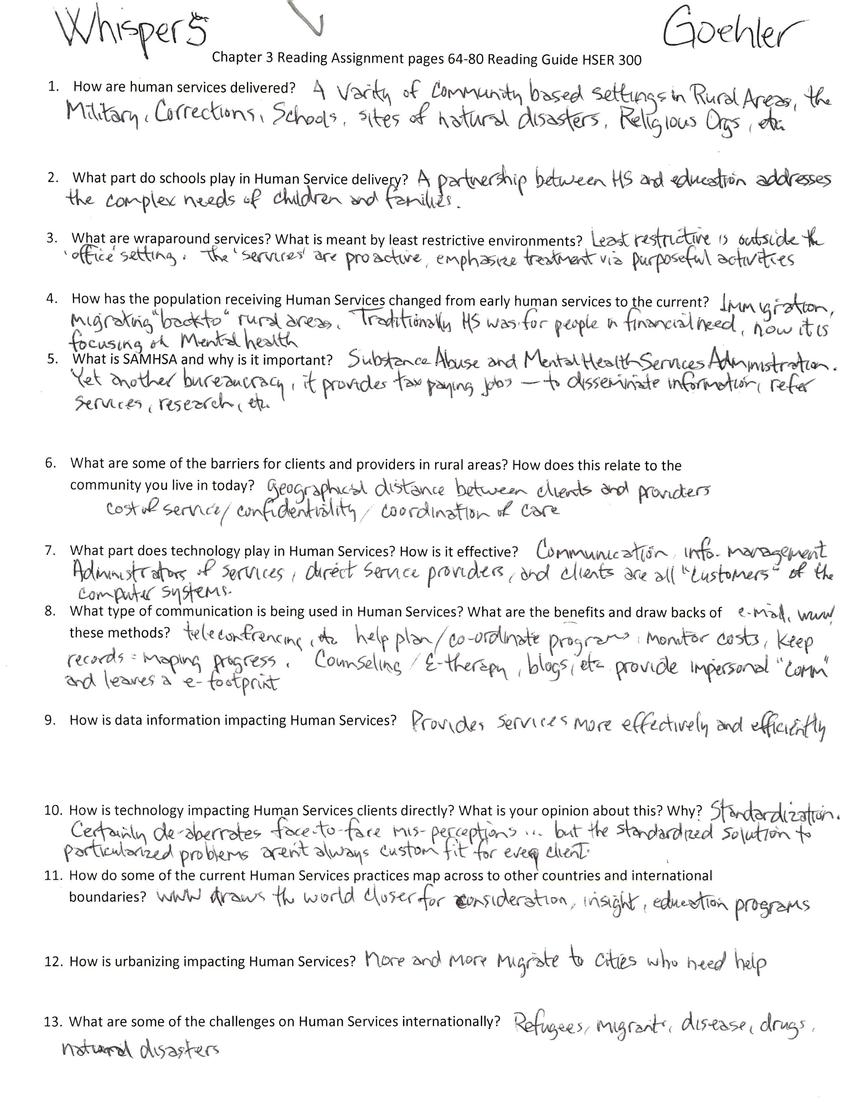
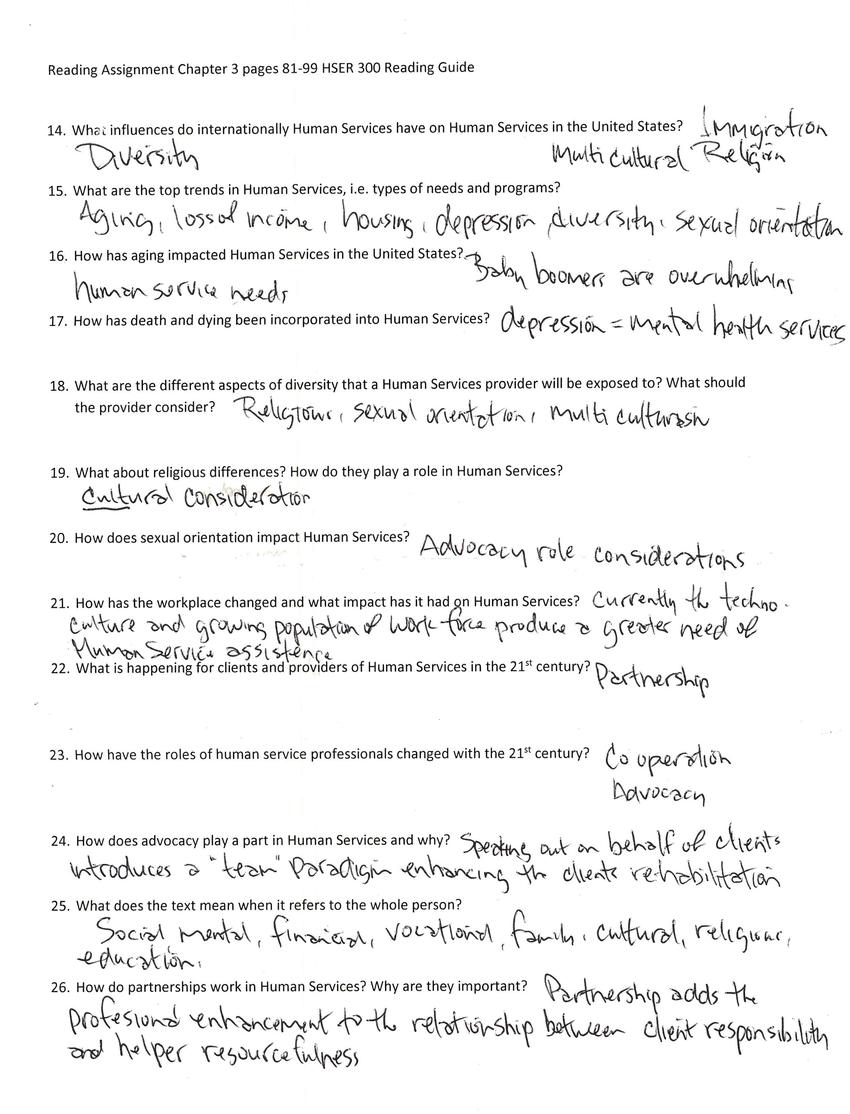


Replies (1)